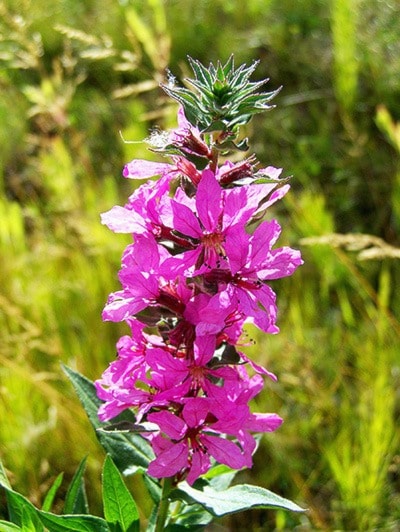Introduced to North America in the water ballast of a European ship in the 1800s, and by bee-keepers for its ability to create a fine quality honey, Purple Loosestrife is an invasive plant that eliminates hundreds of thousands of hectares of wetlands every year.
Even though it is considered a wetland perennial, this invasive plant is adapting to a variety of habitats and invading drier sites such as pastures and croplands.
Often confused with Fireweed, Purple Loosestrife has dense spikes of showy pink-purple flowers with five to six petals, atop a four sided stem. A single plant can produce more than 2.5 million seeds per year that can lay dormant for many years.
Seeds are spread by moving water, wind, wildlife and waterfowl as well as by humans. In addition to the spread of this plant by seed, it also spreads by root fragments.
Purple Loosestrife is aggressively crowding out native vegetation, threatening biodiversity and rare plant species in the process. As native vegetation decreases, so too does wildlife due to the loss of important food sources and habitat.
It is important to keep this species from establishing and causing widespread negative impacts in the region. Please do not purchase, trade or grow Purple Loosestrife. There are many alternatives that can be used that are native to our area that do not cause such a detrimental effect on our environment.
If you do have Purple Loosestrife, it is important to treat it in a manner that is not going to cause further spread. Clip seed heads prior to seed and bag any plant material as well as seeds in a heavy plastic bag and dispose of in a designated invasive plant bins at the Williams Lake, 100 Mile House or Quesnel landfill sites.
If you have any questions or concerns about Purple Loosestrife or need some assistance in the identification or management, contact the Cariboo Regional District’s Invasive Plant Management team at 250-392-3351, or toll free 1-800-665-1636, or visit the website at cariboord.ca.
